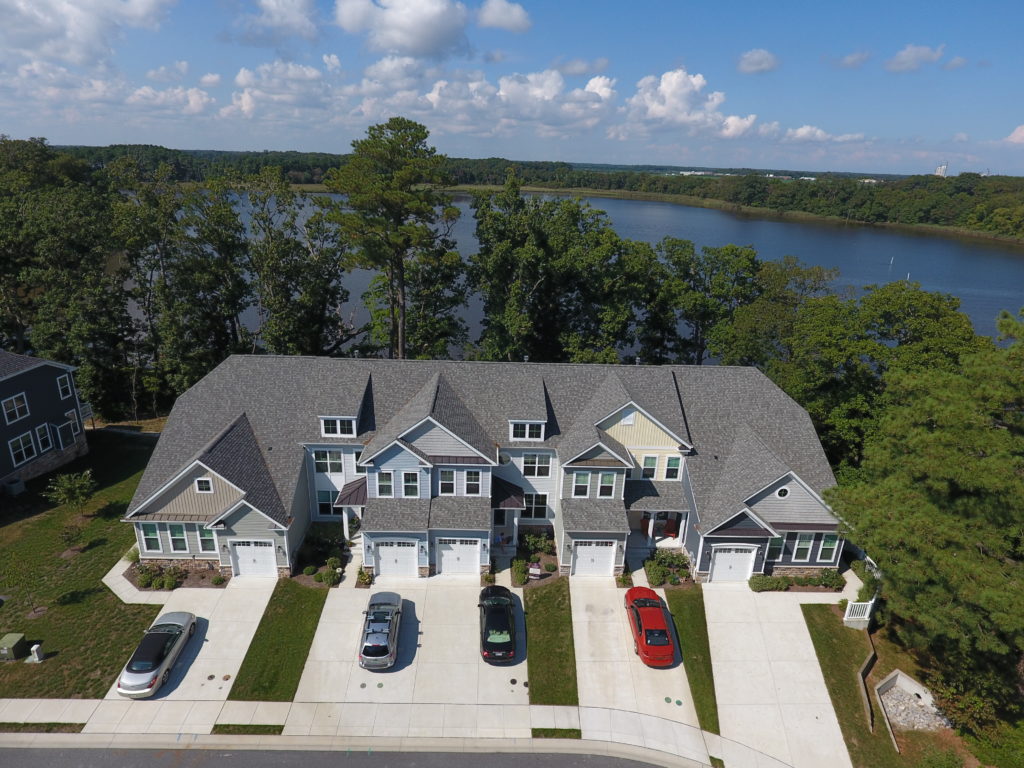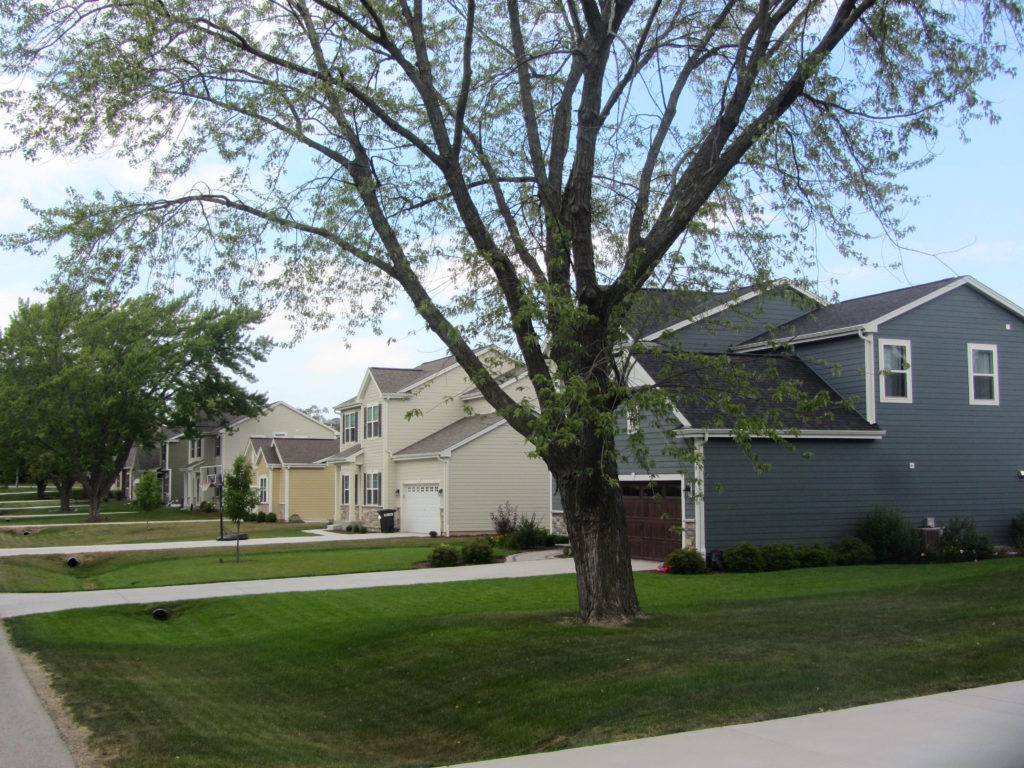Developers who incorporate environmentally friendly designs into their projects often find partnerships with public, private or non-profit organizations to be productive and beneficial. These partnerships can improve the functionality or the aesthetics of a site’s design and even lower construction and maintenance costs. Based on sites certified under the National Green Building Standard (NGBS) for land development, one can see how these type of partnerships enhance all sorts of “green” practices, for open space: erosion control; low impact stormwater management; reforestation and ecosystem rehabilitation; and wildlife habitat protection. Organizations ranging from the U.S. Fish and Wildlife Service to local conservation districts help developers navigate permits, meet local ordinance requirements, survey land and even find financial incentives and resources for developing green. From Delaware to New Mexico, NGBS certified sites exemplify the variety of benefits to forming green partnerships.
Some sites are planned green from the start, some achieve it along the way, and others have greenness thrust upon them. For Wharton’s Bluff, a four star certified NGBS neighborhood along the Indian River in Millsboro, Delaware, green partnerships took both a planned and unplanned course. With beautiful riverine wetlands and forests nearby, Craftsmen Developers’ most important goals for Wharton’s Bluff were erosion control and wetland protection. Team members on the project worked with the local Sussex County Conservation District (SCCD), who helped the team better understand local resources, learn about best construction practices and design to accommodate the loamy soil in order to meet local stormwater requirements. Working with the SCCD helped the team understand the local environment and how to best meet stormwater and construction ordinances. Craftsmen Developers’ principals, Kris Thompson and Conor Gilligan, even became members of the conservation district to form the best working relationship possible.

Despite diligent preparation, a surprise came nestled into the site when the construction crew found a bald eagle’s nest within the property, which temporarily halted development. Under the Endangered Species Act, a team of biological research associates at the U.S. Fish and Wildlife Service (USFWS) were required to come to the site and monitor the eagle’s activities in the area. After observing what turned out to be two eagles, USFWS provided aerial photography of the required buffer area and informed Craftsmen of the relevant federal regulations to protected species. Armed with the best information possible, the development team decided to expand the buffer around the nest and designate the area as a protected wildlife conservation area. While Craftsmen did not expect to work with USFWS from the outset of the project, the partnership nonetheless produced a unique wildlife habitat that not many neighborhoods can claim.
Another Craftsmen Developers site in Severn, Maryland, proves how simple it can be to grow a community’s options for outdoor recreation and environmental preservation. The neighborhood of Coldwater Reserve is another four-star NGBS certified site, where over one third of the property is dedicated to a densely wooded open space. The site is adjacent to the Severn Run Natural Environmental Area, a 1,600-acre conservation area with hiking trails and fishing. Kris Thompson indicated that it was easy to work with the conservation area staff to coordinate connecting trails on the neighborhood property to those in the Environmental Area. As long as the trails would be open to public use, the managers of the Environmental Area had no problem with the area’s existing trail network expanding, which provided residents of Coldwater Reserve access to the larger conservation area.

Partnering with public parks and land managers is a simple and useful step for developments. Since developers manage construction teams efficiently, contracts can be brokered when a development includes a publicly accessible amenity. At Metro Verde South in Las Cruces, New Mexico, the city paid the development team to build public playgrounds on the property. Opening up a neighborhood to public enjoyment engages the local government, connects the community and provides opportunities for higher quality amenities for residents.
Moreover, partnerships around conservation and open space help developers decide where and how much to land to demarcate as off limits from construction–often a fair distance away from construction disturbance. Partnerships with arborists, landscaping experts and or even community members can help ensure a more sustainable environment closer to home for issues related to protecting vegetation or habitats closer to lots. An informal partnership between Neumann Developers and nearby neighbors helped salvage plants for Linfield Crossing in Brookfield, Wisconsin. The infill site was previously a blighted elementary school, but the courtyard and bedding areas held plants that need little watering or maintenance for the new neighborhood and that complemented the newly planted native vegetation. For residents of Linfield Crossing, transplanting vegetation is a simple action which adds history and welcomes new neighbors.

Professional arborists are used by many NGBS sites. At Northwoods at Avery Ranch in Austin, Texas, Rivera Greens in Clarence, NY and Sage Hill in Wayland, MA, developers branched outside their usual teams to tap the most qualified arborists. In the case of Northwoods at Avery Ranch, the team at Trio Development and the city arborist worked to design a preservation and maintenance plan that protects over 8,000 trees throughout the 180-acre site. The plan ensures that trees designated for protection would be properly fertilized, aerated, irrigated and ultimately protected from the expansion of oak wilt. The development team also took part in Austin’s tree mitigation program to protect designated “heritage” trees.
The lead developer for Rivera Greens, Larry LaDuca at Natale Builders, partnered with Haskell Tree Service Inc. to work on a sustainable landscape plan and Re-Tree WNY to designate an area of the property of a tree farm. Sam Berg of Haskell drew up a plan that incorporated native vegetation, wildflowers and grasses into community common areas, in addition to detailing hydrozoning, wind channels, mulching and tree preservation techniques. Re-Tree WNY established a two-acre tree farm on the site that a local Eagle Scout troop established and which is open to the public.
Finally, sometimes a site design requires that some trees just need to be moved. For the neighborhood of Sage Hill, Mike Staiti at Keystone Development worked with Acorn Tree & Landscaping to safely relocate and maintain about 15 trees on the site. These partnerships show how rooted NGBS certified developers are in taking care of their site’s trees.

Another type of partner may be more familiar to developers. A unique feature of the NGBS certification process is working with a Home Innovation Research Lab certified verifier, who is often an environmental consultant. Verifiers are located in every state and help developments meet NGBS requirements and earn points towards a higher rating. For the Reserve at Coral Springs, an infill site of a former golf course, the development team hired an environmental consultant who introduced the NGBS certification and helped them with the verification process. Kyle Abney, from Sustainable Development Consulting at the time, worked on assisting planning stormwater management and erosion control, knowing the site was poised to meet many of the requirements of the NGBS certification. Mr. Abney knew about the NGBS through his work as an environmental consultant and thought it would be a perfect fit for a neighborhood that rehabilitated a former golf course for mixed residential use.
Post by Hannah Krohn, a political science and environmental studies graduate from Haverford College who consulted for NAHB.

